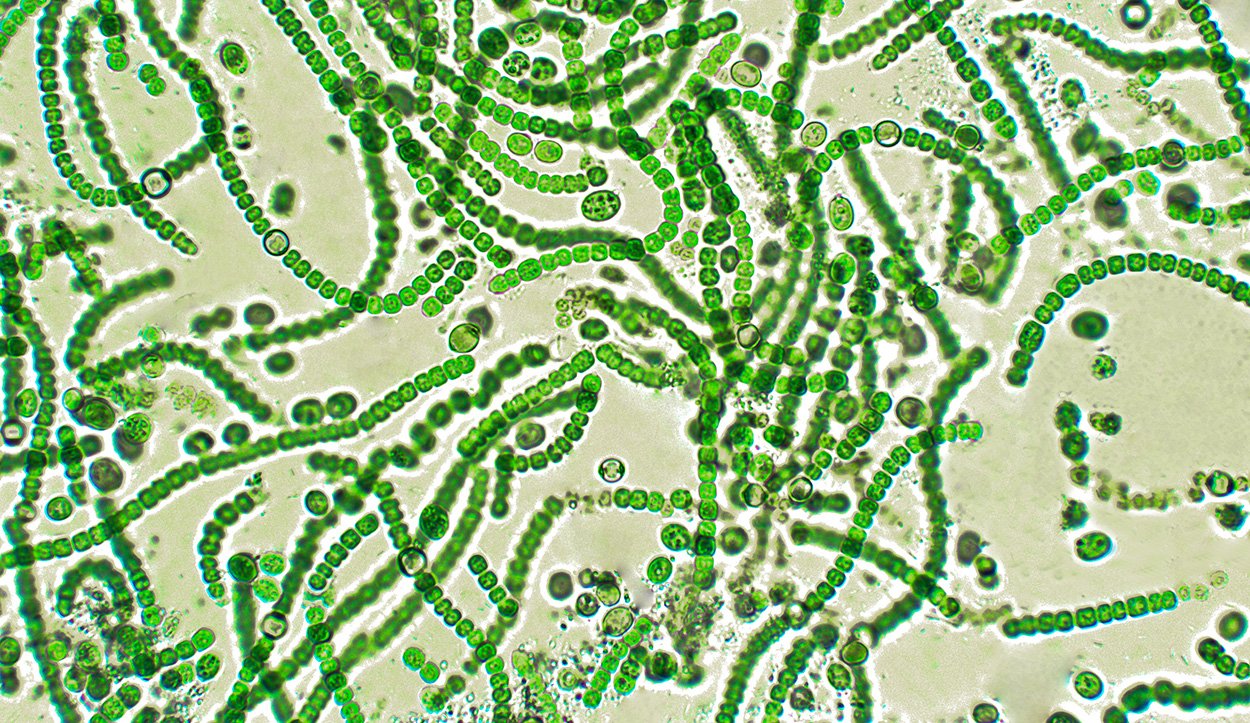When did bacteria gain the ability to generate energy from light and release oxygen in the process? Depending on the method of dating, the answer to this question will vary greatly. Using a combination of genome and fossil data, the researchers have now come to the conclusion that oxygen-producing cyanobacteria evolved 3.4 to 2.7 billion years ago — at least 300 million years before the increase in atmospheric oxygen.
The evolution of photosynthesis laid the foundation for life as we know it today. At a time when oxygen was still toxic to most living things, cyanobacteria began releasing this toxin as a byproduct to produce their energy from sunlight, water, and carbon dioxide. As a result, 2.4 billion years ago, the so-called Great Oxygen Cataclysm occurred: the oxygen content in the atmosphere rose dramatically, which not only led to the mass extinction of anaerobic bacteria living at that time, but also made it possible to develop oxygen-based life Today. However, it was not yet clear when exactly cyanobacteria evolved.
Complement the molecular clock
Previous dating has typically relied on a method for creating a “molecular clock” based on mutation-related changes in the bacteria’s genome, which estimates when different bacterial strains separate from each other. Depending on the model used, however, these estimates fluctuate greatly, because without external reference points it is often unclear how quickly changes can occur. A team led by Greg Fournier of the Massachusetts Institute of Technology (MIT) in Cambridge combined the molecular clock with another method: the researchers also analyzed what is known as horizontal gene transfer. These are rare cases in which bacteria take on genes of a different type. This can happen, for example, when it eats another cell and in the process integrates some of its genes into its own genome.
In these cases, it is clear that the group of organisms that captured the gene must be evolutionarily smaller than the group from which the gene arose. Thus the method does not allow absolute information, but it allows to determine the relative age of different bacterial groups by comparison. Fournier and his colleagues took advantage of this. First, they created different molecular clock models on the origin of cyanobacteria based on genome and fossil data. “In order to decide on an empirical basis which of the models best depicts reality, we used relative age, which can be derived from horizontal gene transfer events,” the researchers explain.
Slow start of photosynthesis
The team found 34 clear cases of horizontal gene transfer in the genomes of thousands of bacterial species. The relative age history derived from this confirmed one of the six previously constructed molecular clock models. According to this, the last common ancestor of all cyanobacteria living today arose about 2.7 billion years ago. According to the model, cyanobacteria as a whole separated from other bacteria about 3.4 billion years ago. “On the basis of genetic data known to date, it is still not clear exactly when oxygenic photosynthesis occurred during this period, since the corresponding bacteria that lived in the transitional period were either extinct or not yet discovered,” the researchers explained.
However, oxygen-producing bacteria appeared no later than 2.7 billion years ago – and thus at least 300 million years before the Great Oxygen Cataclysm. This supports theories that cyanobacteria evolved the ability to produce oxygen early on, but that it took some time for the oxygen to gain an effect in the environment. “In evolution, things always start small,” says Fournier. “Even if there was an early oxygen-producing photosynthesis process – the most important truly amazing evolutionary innovation on Earth – it would have taken hundreds of millions of years to get started.”
Increasing influence 2.4 billion years ago
This finding fits with previous evidence from rock analyzes, which according to the elements oxidized at least three billion years ago. One source of oxygen required for this may be photosynthesis, in which oxygen is attached to the rock rather than being enriched in the atmosphere. “Age estimates suggest that early cyanobacteria had little impact on the global atmosphere,” the authors wrote. However, according to genetic analyzes, cyanobacteria experienced an increase in diversity 2.4 billion years ago. “The most common and diverse groups of cyanobacteria appear to be circulating around the time of the major oxygen catastrophe,” the researchers say.
In their view, this indicates that the spread of cyanobacteria, among other factors, led to the great oxygen catastrophe – with all the consequences for more life on Earth. The authors also want to use the dating method with the help of information on horizontal gene transfer in the future to explore the origins of other species. “This work shows that molecular clocks involving horizontal gene transfers (HGTs) can reliably determine the age of populations across the entire tree of life, even for ancient microbes that left no fossil record – something that was previously impossible,” says Fournier. .
Coyle: Greg Fournier (MIT, Cambridge) et al, Proceedings of the Royal Society B, doi: 10.1098/rspb.2021.0675

“Alcohol buff. Troublemaker. Introvert. Student. Social media lover. Web ninja. Bacon fan. Reader.”







More Stories
Science: The use of artificial intelligence is changing the way hospitals operate
Simple recipe: sweet cream cheese slices from the tray
This is how our brain chooses what information it will remember in the long term